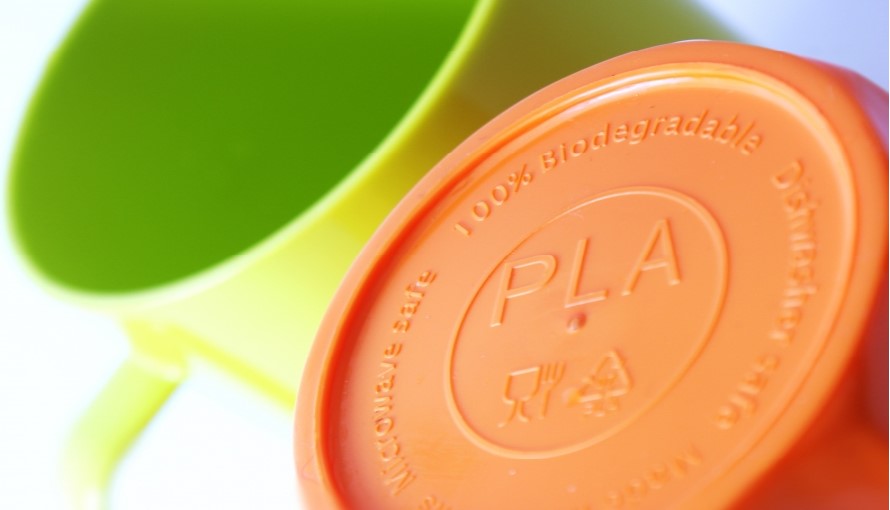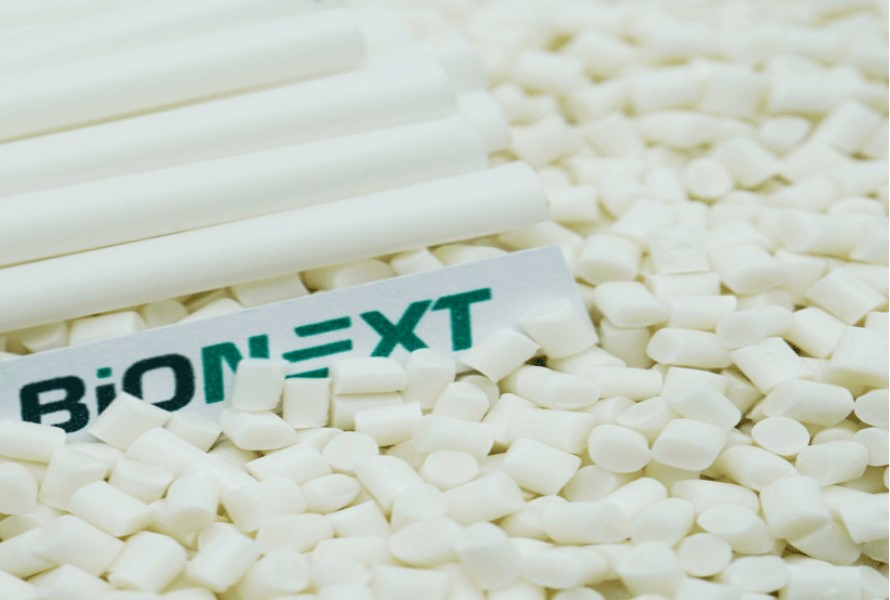The motivation to employ biodegradable materials for food items instead of single-use plastic is making PLA more and more popular on an industrial scale. However, is PLA plastic food safe?
Our article will introduce the material, its properties, and its suitability for food applications. Some examples will be included for your reference. Let's dive into it!
1. Overview Of PLA Plastic
Before answering the question about the PLA plastic food safe property, let's get a general understanding of the material!

PLA, short for Polylactic acid, is a thermoplastic monomer derived from sustainable biomass sources such as sugar cane or maize starch. Its raw material makes it different from most plastics, which are made by polymerizing and distilling petroleum using fossil resources. Although the raw material doesn't presently compete with food production, manufacturers are looking at non-agricultural feedstocks for this derived fermented plant starch polyester.
Read more:
How Is PLA Plastic Made?
How To Make PLA Plastic At Home
Lactic acid and lactide, which are created by bacterial fermentation of carbohydrates such as maize starch, cassava roots, or sugarcane, are the raw materials for PLA. On an industrial scale, this method is renewable and sustainable. Research is still being done to find a cheap and environmentally responsible way to make PLA. Crop waste such as leaves, husks, straws, and stems can be used as substitute sources of carbohydrates in addition to agricultural output, minimizing the consumption of hydrocarbons supplied from fossil fuels. By using the by-products left over from harvesting, this method lessens trash generation and encourages sustainable practices.

PLA plastics are an environmentally favorable substitute for conventional plastics since they may decompose into microplastics in twelve weeks when composted in certain settings. Additionally, they may be recycled by hydrolyzation or using heat depolymerization to provide a monomer solution that can be used to produce PLA again without losing its quality.
2. Answering The Question: Is PLA Plastic Food-Safe?
Yes, PLA is non-toxic; thus, the material is frequently used in food packaging, disposable tableware, and custom 3D-printed items. However, the 3D printing method, intended application, and certifications must all be carefully taken into account to ensure its safety in food items.
Things to consider before choosing PLA as a prior option include its non-toxic composition, biodegradability, temperature sensitivity, and certification. The material is a popular application for the food packing industry because it is made from organic chemicals like maize starch and has no health risks.
Yet, its biodegradability is condition-specific; thus, small companies might find it difficult to decompose. Plus, the material needs to be certified to meet all applicable food safety requirements. PLA's limited heat resistance might not be the best choice. Furthermore, PLA may still get contaminated by food; thus, properly treating it calls for close attention to temperature and hygienic practices.
3. Best Practices For Using PLA With Food
 Is PLA plastic food safe? Now you know, in general, the answer is yes. Let's figure out what are the best ways to use PLA in the food industry:
Is PLA plastic food safe? Now you know, in general, the answer is yes. Let's figure out what are the best ways to use PLA in the food industry:
- Packaging: PLA creates classic and biodegradable food containers, such as trays, cups, and films. The most common example is the packages of prepared meals such as sandwiches or fresh fruit.
- Food service equipment: Many food service products, including trays, clamshells, and food containers, are made of PLA. Due to the PLA plastic food safe properties, these products are made for single use only and can be disposed of in composting conditions.
- Biodegradable cutlery: Cutlery made of PLA, such as spoons, knives, forks, and other common kitchen utensils, is a more ecologically friendly option than cutlery made of plastic. In certain circumstances, these items can be composted.
- Lining for paper cups: Since the PLA plastic food safe property is well-known, the material is utilized to line paper cups, offering a more environmentally responsible option than conventional plastic-lined cups.
- Cutters and molds: Stainless steel is typically used to make 3D-printed molds and cookie cutters. However, these utensils can also be made from PLA. They are used for cookie, chocolate, and other confections production.
Read more: Applications Of PLA Plastic In Human Life
4. Conclusion
Is PLA plastic food safe? In general, the material is considered food safe. Under certain conditions, the products from PLA for food will cause no harm to humans. Due to its renewable resources and biodegradability, the material is an ideal choice for the food packaging industry.
5. About EuroPlas' Bioplastics
 Euro Plas offers BiONext bioplastic compounds made from renewable sources like polylactic acid, polyhydroxyalkanoate, plants, or fossil fuels like aliphatic-aromatic copolyester. Within a year, these biodegradable polymers will break down into biomass, CO2 gas, and water as part of their biodegradable life cycle.
Euro Plas offers BiONext bioplastic compounds made from renewable sources like polylactic acid, polyhydroxyalkanoate, plants, or fossil fuels like aliphatic-aromatic copolyester. Within a year, these biodegradable polymers will break down into biomass, CO2 gas, and water as part of their biodegradable life cycle.
BiONext biodegradable plastic granules offer excellent properties such as a glossy surface, good elongation, high hardness, outstanding impact strength, and ease of machining.
BiONext is created only by EuroPlas, guaranteeing strict control over the bioplastic manufacturing process. By using our products, manufacturers will have less reliance on fossil fuels and promote a better society.
If you want to know more details,don’t hesitate to contact us right now!